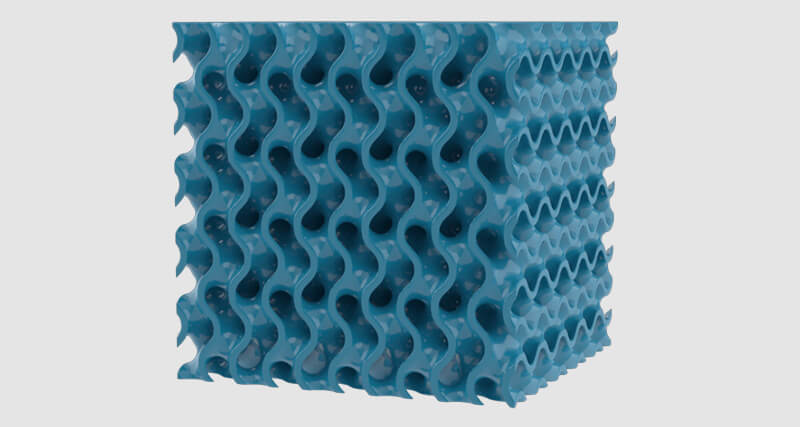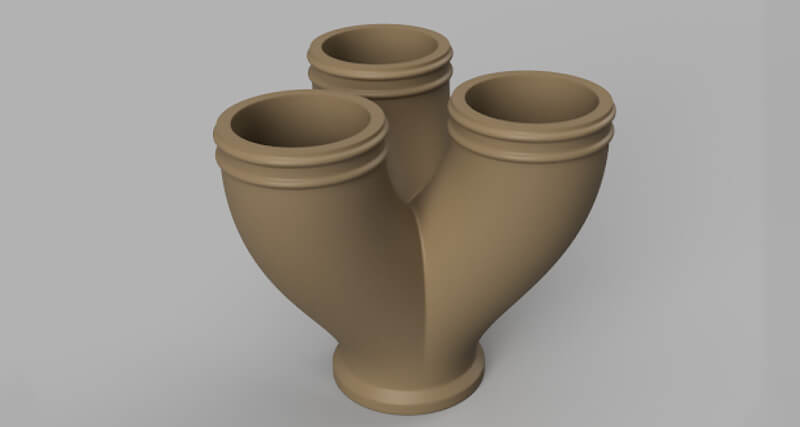Four Key Principles of Design for Additive Manufacturing (DfAM)
Design for additive manufacturing (DfAM) is the practice of designing a part or product that exploits the freedoms of additive manufacturing (AM) while adhering to the process limitations. The aim for all designers should be to minimize the production time, cost, and risk of in-build failure while maximizing the functionality and quality of the components. We deliver our training and consultancy based on four key principles of DfAM. An understanding of these principles will allow designers to create new designs that fully exploit the benefits of AM and give the part the best opportunity of being a commercial success.
1. Design for the Correct Additive Manufacturing (AM) Process
The first of the four key principles for DfAM is design for the correct AM process. This is important as there are many different categories of AM and even more processes. Each of the different processes has different characteristics. These include the ability to produce parts at different production scales, different costs, and different geometric complexities.
To be able to design for the correct AM process, you need to have a good understanding of the strengths and weaknesses of the majority of the AM processes and match these to the geometry of the parts that are creating.

Understanding how best to apply design guidelines, such as the ones illustrated above is necessary to fully exploit the benefits of an individual additive manufacturing technology.
One of the most important elements of DfAM is to know the geometric limitation of the processes. Fortunately, design guidelines have been created by several organizations that can provide you with ballpark figures of constraints such as the minimum feature size, maximum overhang angle, and minimum wall thicknesses that each machine can produce.
Understanding how best to apply design guidelines, such as the ones illustrated above is necessary to fully exploit the benefits of an individual AM technology.
The key to exploiting design for the correct AM process is the application of this knowledge of design constraints to maximize the components’ performance. For example, if you are designing for heat transfer or electromagnetic capabilities, then the fundamental equations will show you that minimizing wall thickness can maximize the performance of a part. Understanding the balance between the minimum wall thickness, cost of the part, and the scale of production will allow you as a designer to match the geometry that you want to create with the correct AM process.
2. Design for Minimal Usage
The second of the four principles of DfAM is design for minimal material usage. Often in AM, we think that minimal material usage is only useful in industries that require lightweight components. However, material usage in AM is also correlated to the build time and the cost of the print.
If you are designing a part to be produced using AM, then you should strive to use the minimum required amount of material to print that part successfully. It’s important to remember that the material used in a print is a combination of the functional material required and also any additional support material that is needed for a successful build. Therefore, to successfully design for minimal material usage, you need to master methods that allow you to minimize the material usage in your end part. Examples of techniques for this include topology optimization and lattice structure design.

Lattice structures such as this gyroid can be a great way to reduce material usage in a part. However, lattices can also be used to tailor the functional properties of parts to improve their overall performance.
Lattice structures such as this gyroid can be a great way to reduce material usage in a part. However, lattices can also be used to tailor the functional properties of parts to improve their overall performance.
You also need to understand techniques to minimize support material. In the course, we cover four of these which are:
- Change build orientation
- Create self-supporting geometry
- Add 45deg chamfers
- Split the part into several components you can reassemble
3. Design for Improved Functionality
Thirdly, we need to maximize the opportunities AM can give us. To achieve this, we’ll look at the third principle of DfAM, which is design for improved functionality. To exploit AM’s benefits, we have to look at what can be achieved with this process that can’t be achieved with any other technology.
Certain ways of doing these include using options like part customization, internal fluid channels for heating or cooling, added surface texturing to parts. All these methods extend AM from an alternative method of producing a part to the only method of producing a part.

Internal structures such as the helical channels within this heat exchanger, really exploit the benefits of AM. A part like this would be practically impossible to manufacture using any other manufacturing method.
Internal structures such as the helical channels within this heat exchanger, really exploit the benefits of AM. A component like this would be practically impossible to manufacture using any other manufacturing method.
Designing for improved functionality is also necessary to justify the business case for AM. The advantage of improving the functionality of the part means that the higher upfront costs of producing a part using AM, especially the metal powder bed processes, can be amortized over the lifetime of the product.
4. Design for Part Consolidation
The final principle is design for part consolidation. In general, one of the principal advantages of AM is the ability to consolidate assemblies into a smaller number of parts, even in some cases, a single monolithic part.
Some reasons why you may want to consolidate parts include reducing the number of fixings, less inventory required, reduced risk on delivery or part obsolescence and ultimately reduced assembly time and costs.

Selecting the best applications of part consolidation is challenging. Parts like this collector work well as additive manufacturing of parts like this, reduces the need for downstream welding processes which require skilled welders and joiners and the need for jigs and fixturing.
However, part consolidation is not without its challenges. Consolidation of parts can mean that assembly and maintenance must be carefully considered. As we strive for a more sustainable world, the ability to repair and maintain parts is essential and as designers, we must be careful not to compromise this in the design process.




